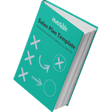 The short answer to retaining sales staff is making sure they meet sales quotas and don’t get bogged down on the way to their goals. The trickle down effect of regularly meeting goals means income is good, the company atmosphere is cheerful, and your company is thriving. The path to fulfilling this can be more complex than anyone anticipates, though -- so here are some common obstacles and how to overcome them:
The short answer to retaining sales staff is making sure they meet sales quotas and don’t get bogged down on the way to their goals. The trickle down effect of regularly meeting goals means income is good, the company atmosphere is cheerful, and your company is thriving. The path to fulfilling this can be more complex than anyone anticipates, though -- so here are some common obstacles and how to overcome them:
Lack of Companywide Communication
Selling is a team sport and teams must effectively communicate toward common goals. There is often an attitude that the burden of selling rests solely on the shoulders of the sales staff and no efficient way is in place to communicate day-to-day minutiae between sales and other departments.
The Fix: An intelligent CRM that integrates with other business systems to limit data entry, allow leadership to leverage database reporting, and give reps the information needed to build rapport with customers and prospects. Content marketing and social engagement, internal accounting data, and email between reps and prospects is collected and organized through automated processes to relieve the burdens of duplicated efforts and hours of data entry.
Disconnect Between Marketing & Sales
When fights rage over what part of some process belongs to which department and who is responsible when goals aren’t being met, rep productivity, engagement, and happiness can all suffer.
The Fix: A data-backed and well-aligned sales and marketing strategy, as well as automation tools that incorporate input from sales for marketing efforts that drive sales qualified leads. A process in place for Sales to follow up with those leads and efficiently report back to Marketing for complete alignment toward common goals is also critical.
Poor Attention to Customer Needs
When your customers aren’t happy your salespeople aren’t happy. In our socially connected lives, unhappy customers can do serious damage to your future sales figures. Whether your company chooses to engage in the two-way communication stream online or not, consumers are there telling everyone what kind of experience they’re having with your products, service, and staff. Are you leaving your sales people out there to be caught off guard?
The Fix: Provide tools that allow your sales and marketing teams to monitor and influence the social media discussions that are happening around your business and industry. Integrate marketing platforms with your CRM system to automatically provide this data to sales, in real time. No more blind-siding with lost accounts, upset customers, or negative reviews.
Insufficient Selling Materials, Methods & Sales Support
It could be your sales team feels overwhelmed by expectations and no support for meeting them. Every salesperson should be expected to hit certain goals -- number of dials, quota attainment, etc. -- but without the proper support, they'll either miss targets, or grow tired of hitting them by the skin of their teeth.
The Fix: A robust website that serves as a powerful toolkit for your sales and marketing team. Salespeople can avoid the cold calls when there is a marketing strategy in place that engages the whole company to build relationships through social media channels, blog articles, and informative content throughout your online presence.
Paperwork and Reports
For salespeople, every minute taken away from advancing a sale is counterintuitive to their primary function of reaching sales goals. As a result, salespeople have a natural disdain for creating reports and filling out paperwork. Stop piling on the paper and you will see happier salespeople who will want to stay with your organization.
The Fix: Find and use software that integrates with sales and marketing tasks so reporting and other form-related tasks happen automatically through the course of a salesperson’s everyday routine. Management gets top down reporting functions and sales people are freed from spreadsheets and extra pressure.
Sales can be a tough job. If you’re doing things that show you value the efforts of every salesperson and don’t expect them to carry the burden alone, they’re far more likely to stay.








![Are Sales Reps Rushing Back to the Office? [New Data]](https://www.hubspot.com/hubfs/sales-reps-returning-fi%20%281%29.jpg)


![The 5 Main Sales Productivity Metrics Managers Track [& How to Improve Yours]](https://www.hubspot.com/hubfs/sales%20productivity%20metrics%20%281%29.jpg)